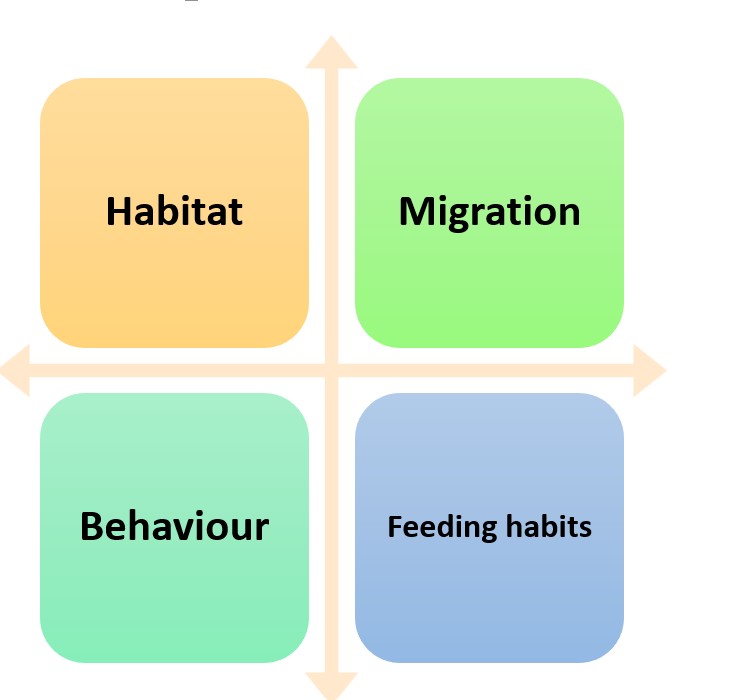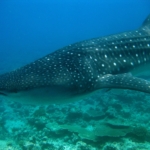Sharks and seals have performed a timeless dance of predator and prey – a symphony of survival in the depths of the ocean. We explore the riveting match-up between the great white shark and the elephant seal.
The great white shark is equipped with rows of razor-sharp teeth, and its streamlined form is intimidating. It strikes with lightning-quick speed and a bite of unparalleled force. On the other hand, the elephant seal, despite its bulky shape and blubbery exterior, has remarkable agility and strength. During breeding season, they hone their skills for encounters with vicious opponents.
What sets this showdown apart isn’t just the power each possesses, but their individual hunting strategies. The great white shark prefers to lurk beneath its prey, then pounce in a flash. But the elephant seal fights off attacks with raw power, rather than grace.
Key Takeaways
- Great white sharks are known for their powerful bite and ability to take down large prey, such as elephant seals.
- Elephant seals are massive marine mammals that can weigh up to several thousand pounds and are a common target for great white sharks.
- The hunting strategy of great white sharks involves a stealthy approach followed by a sudden burst of speed to catch their prey off guard.
- Elephant seals have thick blubber and tough skin that provide some protection against the sharp teeth of great white sharks.
- Despite their size and strength, elephant seals are not always able to defend themselves against a determined great white shark attack.
- Great white sharks have been observed launching themselves out of the water to catch elephant seals, a behavior known as breaching.
- The interaction between great white sharks and elephant seals is a fascinating example of predator-prey dynamics in the marine ecosystem.
- The survival of elephant seals depends on their ability to avoid or escape from great white shark attacks, which can be challenging given the sharks’ speed and agility.
- Researchers continue to study the behavior and interactions between great white sharks and elephant seals to gain a better understanding of these apex predators and their impact on marine ecosystems.
- The article highlights the awe-inspiring power and adaptability of great white sharks, as well as the resilience and survival strategies of elephant seals in the face of predation.
Physical Characteristics

Great White Sharks and Elephant Seals have special physical features that make them stand out from other creatures. Let’s look deeper into their unique qualities.
Let’s inspect the significant physical features of the Great White Shark and Elephant Seal:
| Great White Shark | Elephant Seal |
|---|---|
| Size | Up to 20 ft (6m) |
| Weight | Approximately 5,000 lbs |
| Torpedo-shaped Body for streamlined swimming | Robust body with blubber for insulation |
| Coloration | Grey or blue-gray on top with white underside |
| Teeth | Razor-sharp, serrated teeth designed for tearing prey |
These animals have more notable qualities. Great White Sharks possess an exceptional sense of smell, able to detect a single drop of blood in the sea from miles away. In contrast, Elephant Seals can hold their breath underwater for up to two hours.
Diet and Feeding Habits
The great white shark and elephant seal possess differing dietary preferences and feeding habits. To understand them better, let us compare their diets and techniques in a table:
| Species | Diet Items | Feeding Techniques |
|---|---|---|
| Great White Shark | Fish, seals, sea lions | Ambush predation |
| Elephant Seal | Squid, fish, octopus | Active foraging |
This table reveals the contrast in their diets and tactics. Great white sharks use ambush predation to target primarily fish, seals, and sea lions. Meanwhile, elephant seals actively forage for squid, fish, and octopus.
These creatures have remarkable variations in how they acquire sustenance. By understanding their feeding habits, we can appreciate nature’s mechanisms.
We shouldn’t miss out on the chance to learn about the unique ways these two powerful animals source for food. This is an opportunity to discover more about the great white shark and elephant seal by exploring their fascinating dietary behaviors. Watch out, elephant seals, the great white shark is out to get you!
Hunting Strategies
The great white shark and elephant seal have unique hunting strategies. Let’s explore them!
The two predators differ in how they hunt. Great whites hunt alone using surprise attacks. Elephant seals hunt in groups. They use their size and strength to overpower prey.
Great whites target marine mammals and employ a technique called breaching. Elephant seals prey on fish, squid, and other small sea creatures. They use a ‘sit-and-wait’ approach.
An example of the great white shark’s hunting prowess happened off South Africa’s coast. A shark breached high into the air targeting a seal near the water’s surface.
Habitat and Migration Patterns

The Great White Shark and Elephant Seal are quite different. Let’s explore their characteristics!
Habitat:
- The Great White Shark – Coastal areas
- The Elephant Seal – Beaches
Migration:
- The Great White Shark – Long-distance
- The Elephant Seal – Moderate
Behavior:
- The Great White Shark – Solitary
- The Elephant Seal – Group-oriented
Feeding Habits:
- The Great White Shark – Carnivorous
- The Elephant Seal – Piscivorous
It’s fascinating to note that while the Great White Shark prefers coastal areas, the Elephant Seal looks for refuge on beaches. Also, the Great White Shark migrates long-distance, while the Elephant Seal takes moderate migrations.
Threats and Conservation Status
Both Great White Sharks and Elephant Seals suffer from habitat loss due to environmental changes, impacting their survival. Human activities, such as commercial fishing and hunting, put these species in danger and lead to a decrease in their populations.
Pollution, especially plastic waste, is a major hazard to the Great White Shark and Elephant Seal, causing harm to their habitats. The climate change influences ocean currents, disrupting the natural behavior and patterns of these creatures.
Unregulated tourism can disturb their natural behavior and increase stress levels. Illegal wildlife trade also poses a threat, as the demand for certain body parts encourages poaching, risking their populations.
Protecting these marine animals is more than just preserving individual species. They play a crucial role in keeping the balance of our ocean ecosystems. Appropriate conservation efforts can help reduce these threats and guarantee a healthier future for both the Great White Shark and Elephant Seal.
These two creatures have unique characteristics. The Great White Shark has an excellent sense of smell, allowing it to detect prey from long distances. Elephant Seals go on remarkable voyages during mating seasons across vast stretches of ocean. These details demonstrate the importance of preserving these two extraordinary species.s.
Frequently Asked Questions
Q: What is the size difference between a great white shark and an elephant seal?
A: Great white sharks can reach lengths of up to 20 feet, while elephant seals can grow up to 16 feet long. However, the weight of a great white shark can be much greater than that of an elephant seal.
Q: Who is the predator in the great white shark vs elephant seal matchup?
A: The great white shark is the predator in this matchup. It is known for its powerful bite and ability to hunt and kill elephant seals in the ocean.
Q: Do great white sharks often prey on elephant seals?
A: Yes, great white sharks are known to feed on elephant seals. These seals are a valuable food source for the sharks, especially during their migration periods along the coast.
Q: Can elephant seals defend themselves against great white sharks?
A: Although elephant seals have powerful bodies and can put up a fight, they are not well-equipped to defend themselves against great white sharks. Their large size can make them an attractive target for sharks.
Q: Are there any techniques elephant seals use to evade great white sharks?
A: When elephant seals sense danger, they rely on their agility and speed to escape from great white sharks. They can quickly maneuver in the water, making it difficult for the sharks to catch them.
Q: What is the role of this predator-prey relationship in the ecosystem?
A: The great white shark vs elephant seal relationship plays a crucial role in maintaining a balanced marine ecosystem. The predation helps control the population of elephant seals and ensures the survival of healthier individuals.
Conclusion
A showdown between Great White Shark and Elephant Seal! Nature puts its strength to test.
The two majestic creatures are incredibly different. The Elephant Seal relies on brute force and stamina.
The Great White Shark is agile, with sharp teeth and lightning speed. It can detect prey from miles away with its acute sense of smell.




